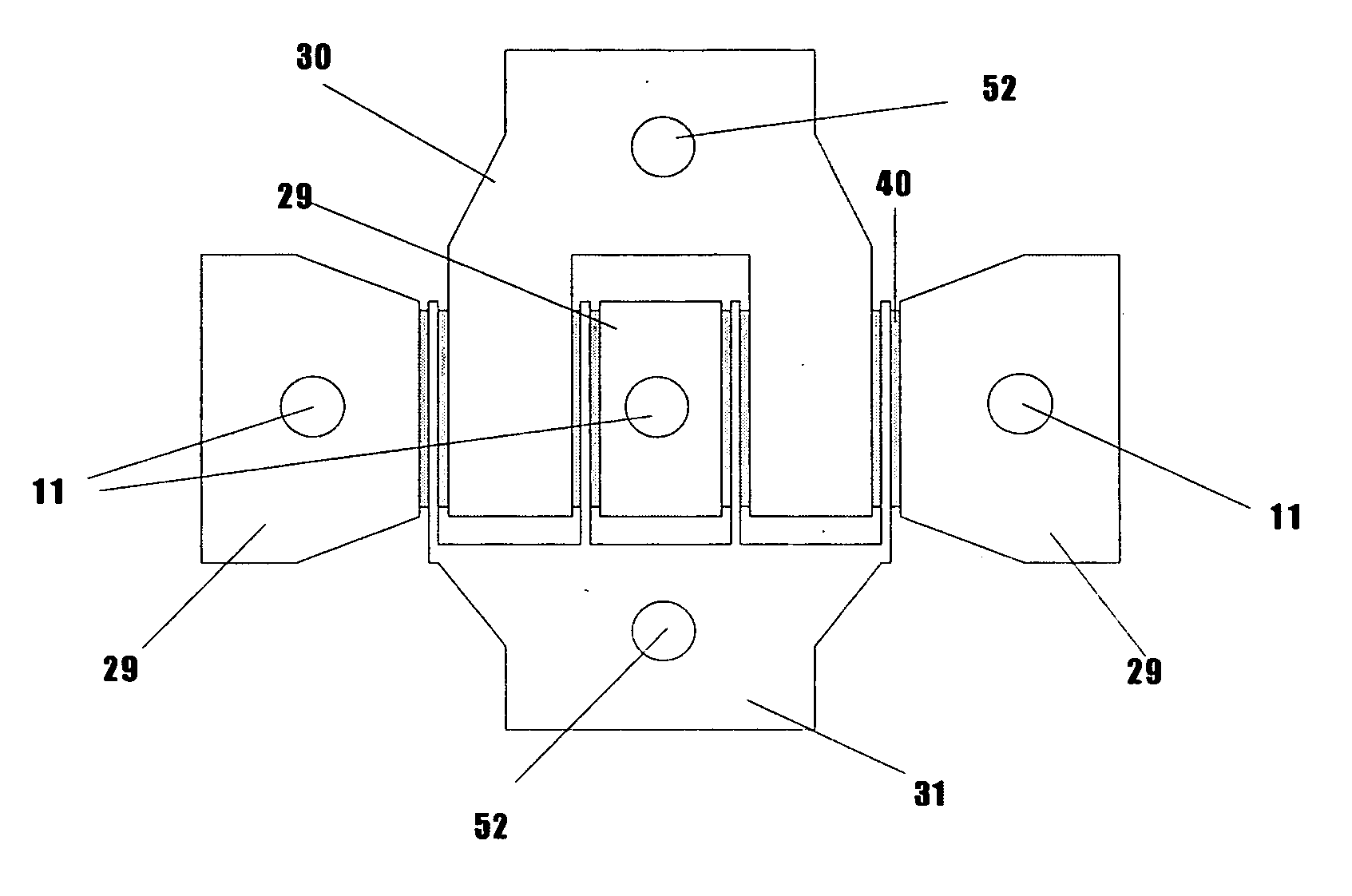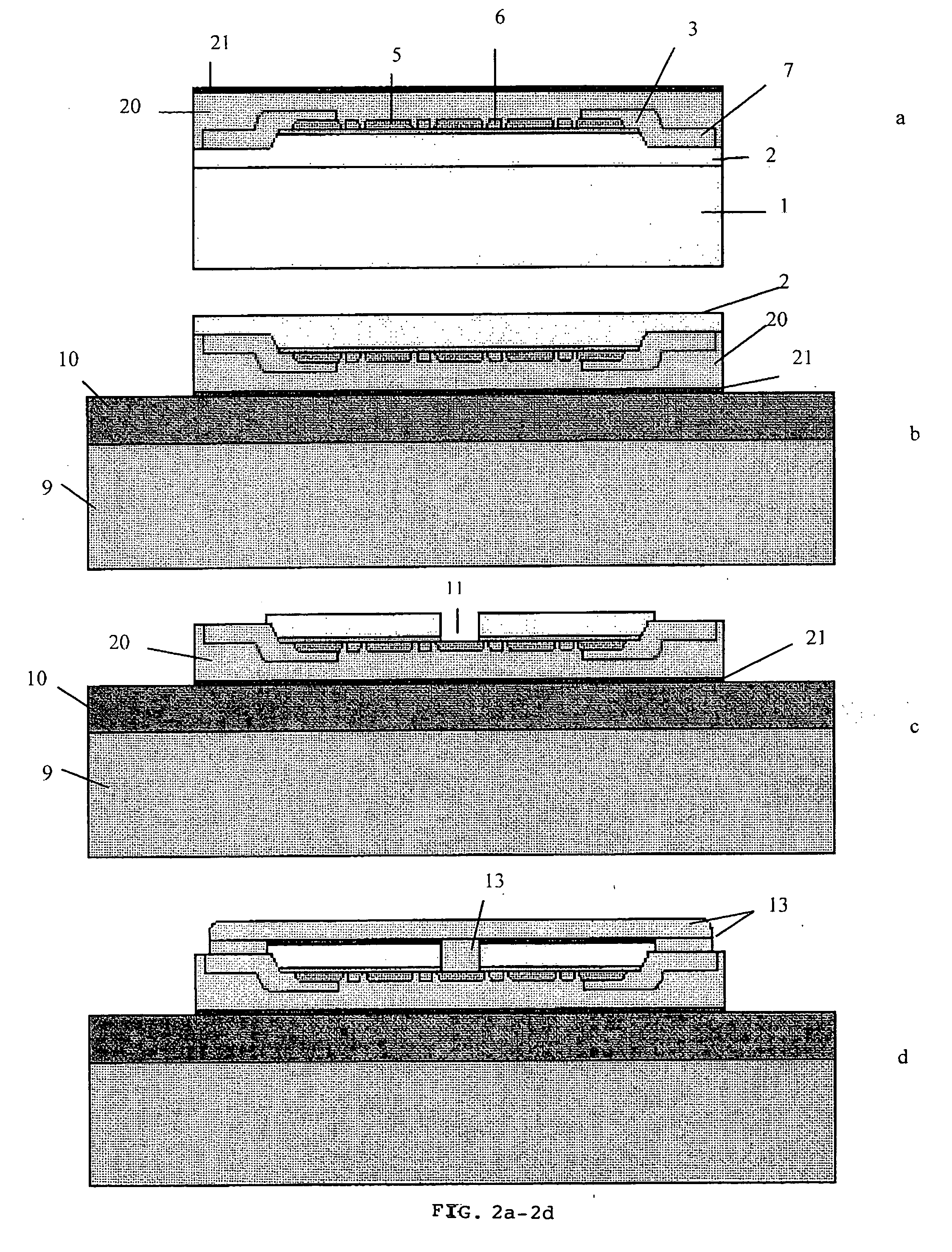Method for producing a semiconductor device and resulting device
- Summary
- Abstract
- Description
- Claims
- Application Information
AI Technical Summary
Benefits of technology
Problems solved by technology
Method used
Image
Examples
first embodiment
[0056] The preferred embodiment of the present invention concerns the production of a multi-finger HEMT device according to the method as characterised above. In FIG. 1, the different process steps of producing a HEMT according to the invention, are illustrated. The steps will be further highlighted hereafter.
[0057]FIG. 1a: providing a sapphire substrate 1, with a semiconductor stack on top of it. The stack consists of a GaN layer 2 and an AlGaN layer 3. The GaN film is between 1 and 5 μm thick and grown on the sapphire substrate in a MOCVD system (Metal Organic Chemical Vapour Deposition). The top layer 3 of AlGaN (15-30 nm) film is grown on top such that a high concentration of electrons occurs at the interface (two dimensional electron gas, 2-DEG).
[0058]FIG. 1b: a mesa etch is done to isolate individual devices on the substrate. The etch has to go through the 2-DEG interface 4.
[0059]FIG. 1c: A metal stack 5 is deposited for the drain and source contacts. The source and drain co...
second embodiment
[0074] a number of additional steps are performed, as illustrated in FIG. 2.
[0075]FIG. 2a: The same steps as desbribed above are applied to obtain the gate source and drain contact zones 5 and 6 on the substrate 1. A passivation layer 20 is deposited on the contacts 5 and 6, with an etch stop 21 layer on top of the passivation layer.
[0076]FIG. 2b: the substrate 1 is reversed and bonded to the second substrate 9, after which the first substrate 1 is removed, in the same way as in the first embodiment. The bonding layer 10 according to this embodiment is not necessarily a thermally conductive adhesive layer. It may be SU8 / BCB or metal.
[0077]FIG. 2c: vias 11 are etched to the contact areas. In principle, vias to only the source contacts would be enough in this case, but the disadvantage here then is that the devices cannot be measured before bonding to the third substrate. In the preferred case of this embodiment, therefore, vias are produced to all contact areas (source, drain, gat...
embodiment 1
[0089]FIGS. 7a and 7b show two possibilities which can be used in a device according to The interconnect layer 13 shows three distinct regions, and thus allows a common contact to the gates, drains and sources respectively.
PUM
 Login to View More
Login to View More Abstract
Description
Claims
Application Information
 Login to View More
Login to View More - R&D
- Intellectual Property
- Life Sciences
- Materials
- Tech Scout
- Unparalleled Data Quality
- Higher Quality Content
- 60% Fewer Hallucinations
Browse by: Latest US Patents, China's latest patents, Technical Efficacy Thesaurus, Application Domain, Technology Topic, Popular Technical Reports.
© 2025 PatSnap. All rights reserved.Legal|Privacy policy|Modern Slavery Act Transparency Statement|Sitemap|About US| Contact US: help@patsnap.com



